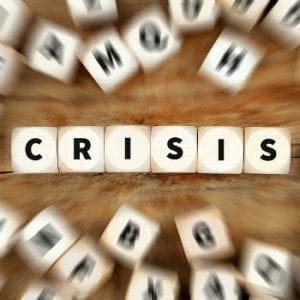 Crises can derive from humans or natural events. They may or may not be controlled or controllable…BUT YOUR MESSAGE CAN BE!
Crises can derive from humans or natural events. They may or may not be controlled or controllable…BUT YOUR MESSAGE CAN BE!
In a world wrought with negative comments and online reviews, a company’s reputation is only as good as its communication strategy. Companies like Enron and Volkswagen both endured a crisis, but one went bankrupt while the other is thriving. What made the difference in these cases? Communication. No company is immune to crisis, but it is the manner in which they react to it that will make a difference. You may have already dealt with a crisis. If you haven’t yet, it will inevitably come.
The bad news: You don’t have a clue when a crisis will strike. It’s like preparing for a client’s outside wedding in September. The day arrives and the skies open wide, pouring down rain and making the tents (and all the guests’ spirits) droop. The good news: You can prepare for a crisis and embrace strategies during the down time, the calm time, and the sunny days, to put these strategies into place.
Here are some tips to get you started:
1. Put crisis communication on your agenda
Most companies think about crisis communication only when they are in the midst of the crisis itself. Then they run around trying to contact the right people to deliver an effective message, and, hopefully, put out the figurative crisis fire. Take advantage of the calm moments at work to organize your thoughts on crisis and brainstorm both potential crises which could affect your company and appropriate responses. Read up on other company’s crises and reflect on what you perceive to be ‘good’ responses with minimal lateral damage.
2. Set up a crisis communication team
Some companies have an official crisis communication team in place, either in-house or out-sourced. If you don’t have a team, it’s time to form one. Ideally, your team members should include CEO/Senior Official, Corporate Communications/PR Director, Operations Manager/Customer Service Executive, Legal Advisors, Human Resources Director, Finance Department Representative, and Technical/IT Experts. However, for a smaller company (yes, crises happen to small companies as well, often with much more dramatic conclusions), you could choose a smaller team.
If you do have a team, when is the last time you met with them? Although nobody likes a meeting for a meeting’s sake, this is the best way to ensure that your team is (still) on-board with your crisis communication strategy.
3. Dust off your existing crisis communication plan or draft a new one
Like your crisis communication team, when is the last time you checked your crisis communication plan? Be honest, some of you don’t even know if you have one or where to find it if you did. Look at the last time it was updated. If one of the crises involves a fax machine, it has probably been decades since you last looked at it. Pay close attention to the resources allocated and the chain of command which was once established. Does this reflect your current company status? Are the resources the same? If not, it is time to rework your crisis communication plan.
4. Prepare templates
Through brainstorming potential crises for your company with your crisis communication team, you can prepare templates for the messages which would need to be sent out during the crisis. These templates can save you time when the crisis is happening. Imagine that there is a natural disaster right outside your hotel which could endanger your clients: A templated message is a better way to begin than a blank Word document. Save these templates in a shared folder with your crisis communication team so that all messages are consistent. Also, save previous crises messages to debrief at a later time.
5. Get training
Numerous types of crisis communication training exist. When was the last time you, your crisis communication team, or anyone in your company trained to deal with crisis communication? This type of training could be done with only the team or with all the employees as they, too, may be faced with inquisitive minds and need to know how to respond to questions as well.
6. Do practice runs
Following the last 5 steps is great, but everyone knows that practice makes perfect. Imagine a crisis situation within your company and do a practice run. In this way, you could see first- hand if your crisis communication plan actually works and if you team is up for the challenge. Practice runs are win-win situations: If all goes well, you can be confident that you are as prepared as you can be when the next crisis strikes. If there are glitches, it is better to catch them now when there is nothing to lose and make the appropriate modifications to your crisis communication plan.
On a final note, if and when a crisis arises, rest assured, it will also pass. Most crises are dealt with in the first 24 to 72 hours, so be patient and ride the wave. However, when the crisis has abated, don’t be too quick to go back to status-quo or daily business. Take the time to debrief with your crisis communication team and make adjustments to your crisis communication plan. You’ll be glad you did when the next storm comes.
While I can’t promise that implementing these tips will help you to avoid a crisis storm, at least you will have your umbrella and wellies with you to face it… and a few drops of water never hurt anyone!































